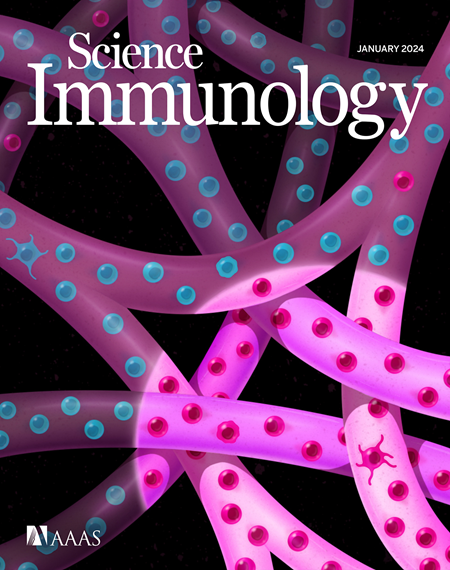An ILC2-chitinase circuit restores lung homeostasis after epithelial injury
IF 17.6
1区 医学
Q1 IMMUNOLOGY
引用次数: 0
Abstract
Environmental exposures increase the risk for severe lung disease, but specific drivers of persistent epithelial injury and immune dysfunction remain unclear. Here, we identify a feedback circuit triggered by chitin, a common component of airborne particles, that affects lung health after epithelial injury. In mice, epithelial damage disrupts lung chitinase activity, leading to environmental chitin accumulation, impaired epithelial renewal, and group 2 innate lymphoid cell (ILC2) activation. ILC2s, in turn, restore homeostasis by inducing acidic mammalian chitinase (AMCase) in regenerating epithelial cells and promoting chitin degradation, epithelial differentiation, and inflammatory resolution. Mice lacking AMCase or ILC2s fail to clear chitin and exhibit increased mortality and impaired epithelial regeneration after injury. These effects are ameliorated by chitinase replacement therapy, demonstrating that chitin degradation is crucial for recovery after various forms of lung perturbation. Thus, the ILC2-chitinase response circuit may serve as a target for alleviating persistent postinjury lung epithelial and immune dysfunction.
上皮损伤后,ILC2-几丁质酶回路可恢复肺稳态
环境暴露会增加罹患严重肺病的风险,但持续性上皮损伤和免疫功能障碍的具体驱动因素仍不清楚。在这里,我们确定了由甲壳素(空气传播颗粒的常见成分)引发的反馈回路,该回路会在上皮损伤后影响肺部健康。在小鼠体内,上皮损伤会破坏肺几丁质酶的活性,导致环境中几丁质的积累、上皮更新受损以及第2组先天性淋巴细胞(ILC2)的激活。反过来,ILC2 通过诱导再生上皮细胞中的酸性哺乳动物几丁质酶(AMCase),促进几丁质降解、上皮分化和炎症消退,从而恢复平衡。缺乏 AMCase 或 ILC2 的小鼠无法清除几丁质,并表现出死亡率升高和损伤后上皮再生受损。几丁质酶替代疗法可改善这些影响,这表明几丁质降解对各种形式的肺干扰后的恢复至关重要。因此,ILC2-几丁质酶反应回路可作为缓解损伤后肺上皮和免疫功能障碍的靶点。
本文章由计算机程序翻译,如有差异,请以英文原文为准。
求助全文
约1分钟内获得全文
求助全文
来源期刊

Science Immunology
Immunology and Microbiology-Immunology
CiteScore
32.90
自引率
2.00%
发文量
183
期刊介绍:
Science Immunology is a peer-reviewed journal that publishes original research articles in the field of immunology. The journal encourages the submission of research findings from all areas of immunology, including studies on innate and adaptive immunity, immune cell development and differentiation, immunogenomics, systems immunology, structural immunology, antigen presentation, immunometabolism, and mucosal immunology. Additionally, the journal covers research on immune contributions to health and disease, such as host defense, inflammation, cancer immunology, autoimmunity, allergy, transplantation, and immunodeficiency. Science Immunology maintains the same high-quality standard as other journals in the Science family and aims to facilitate understanding of the immune system by showcasing innovative advances in immunology research from all organisms and model systems, including humans.
 求助内容:
求助内容: 应助结果提醒方式:
应助结果提醒方式:


